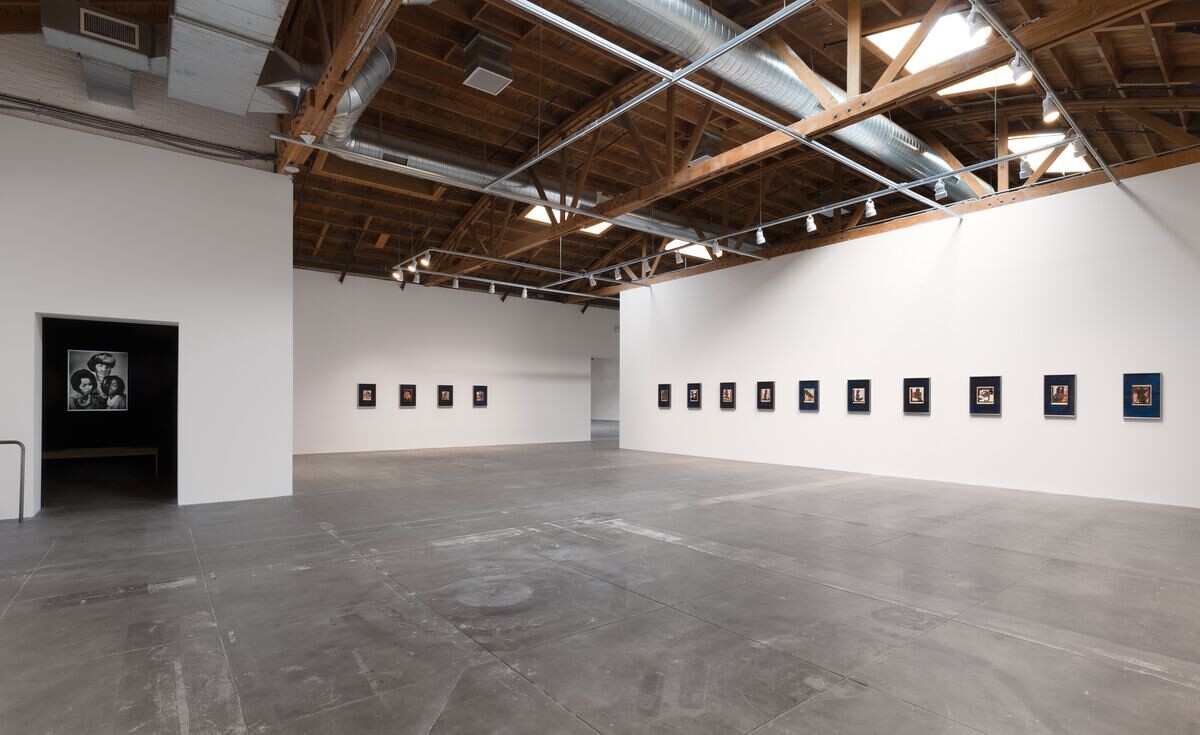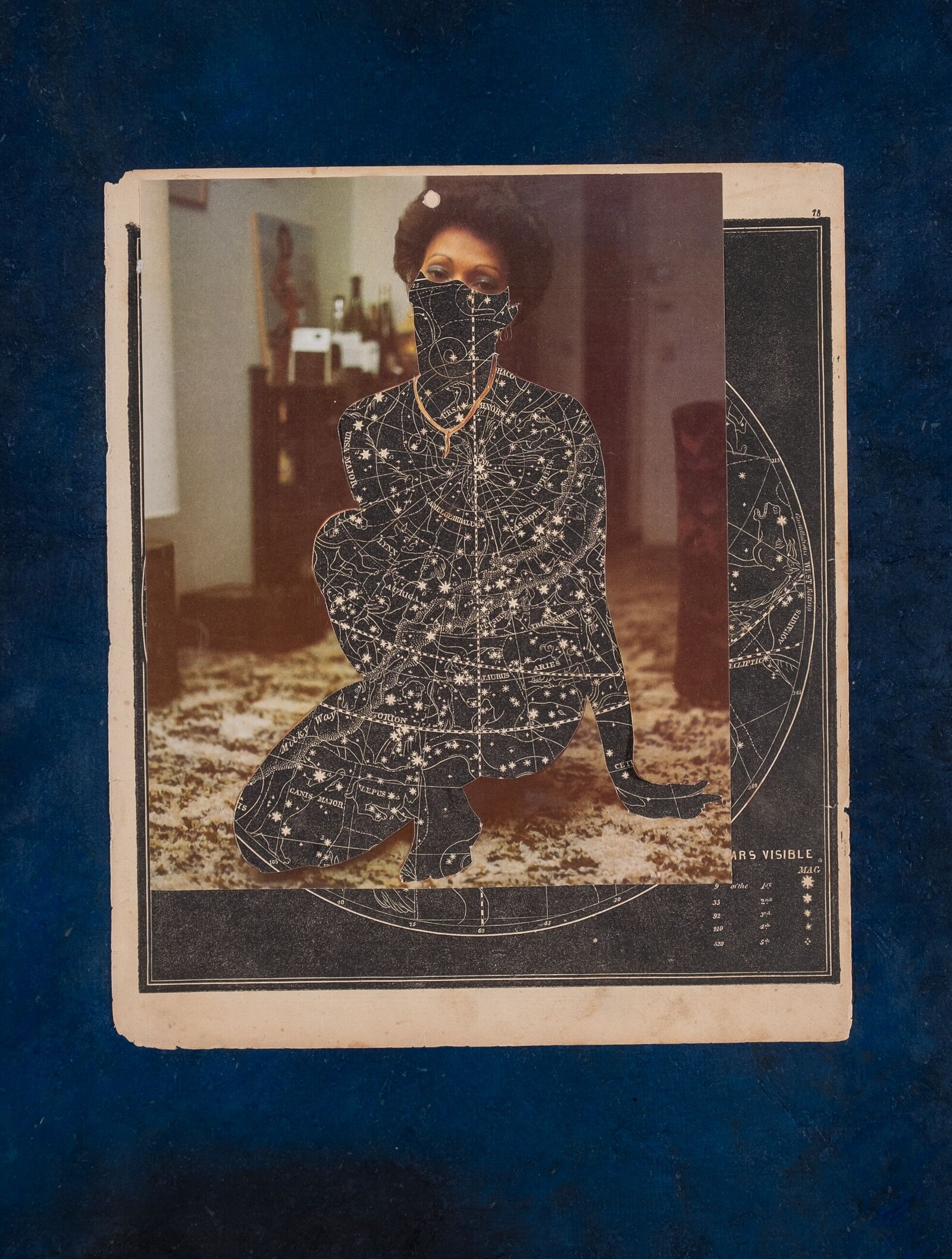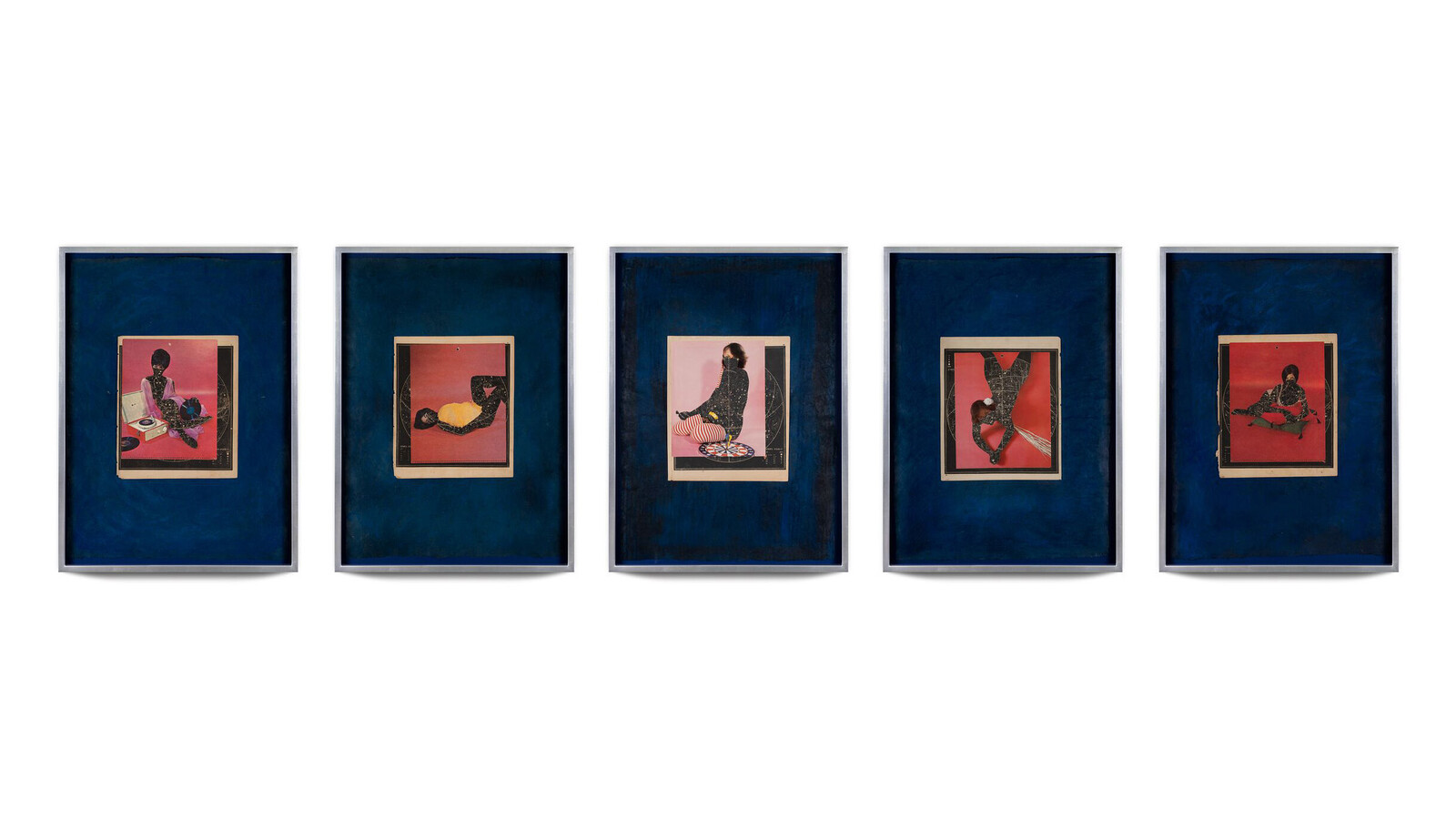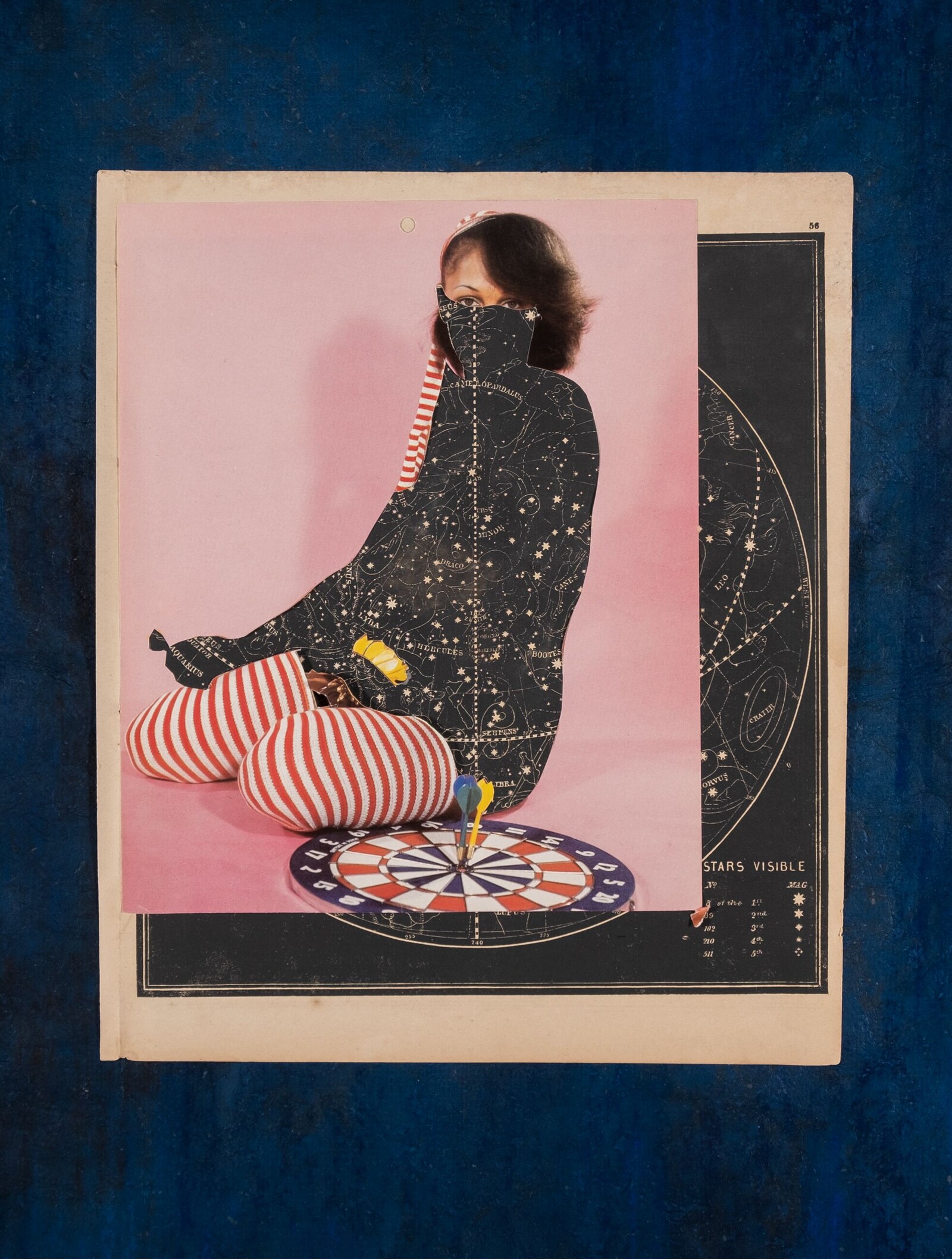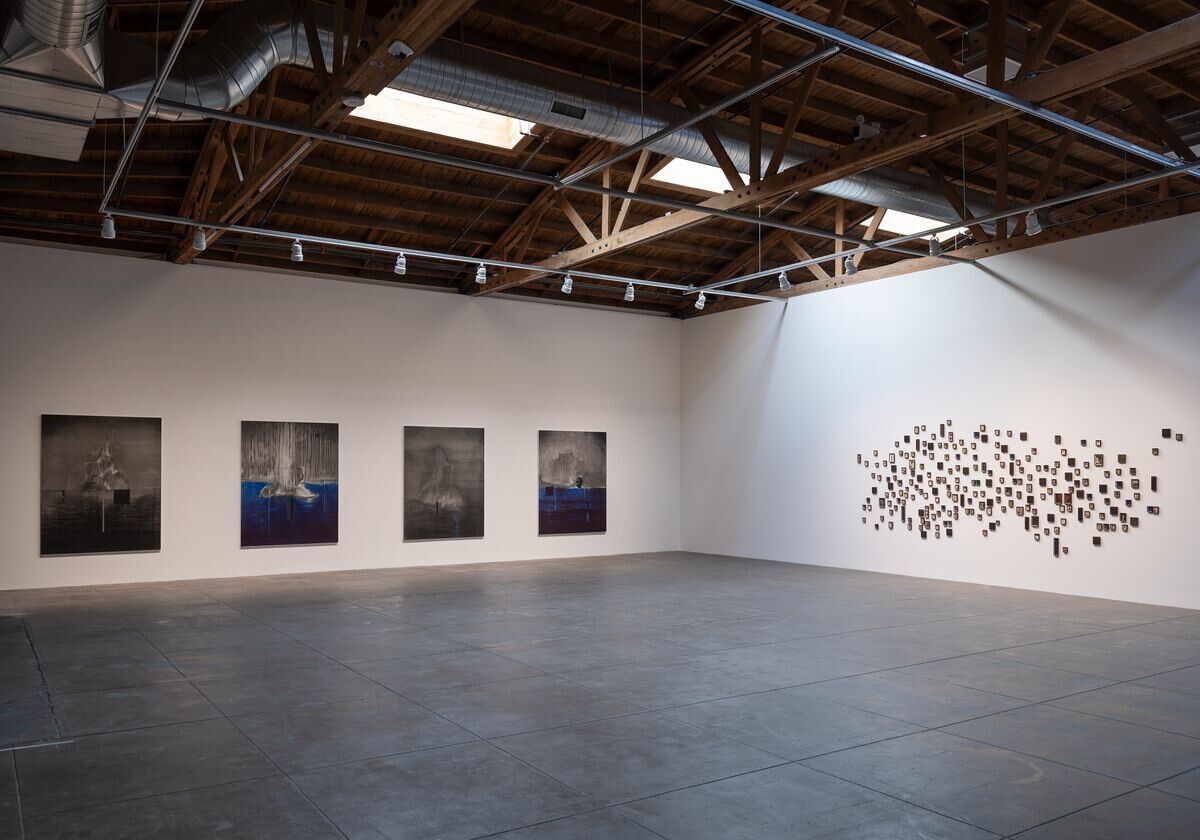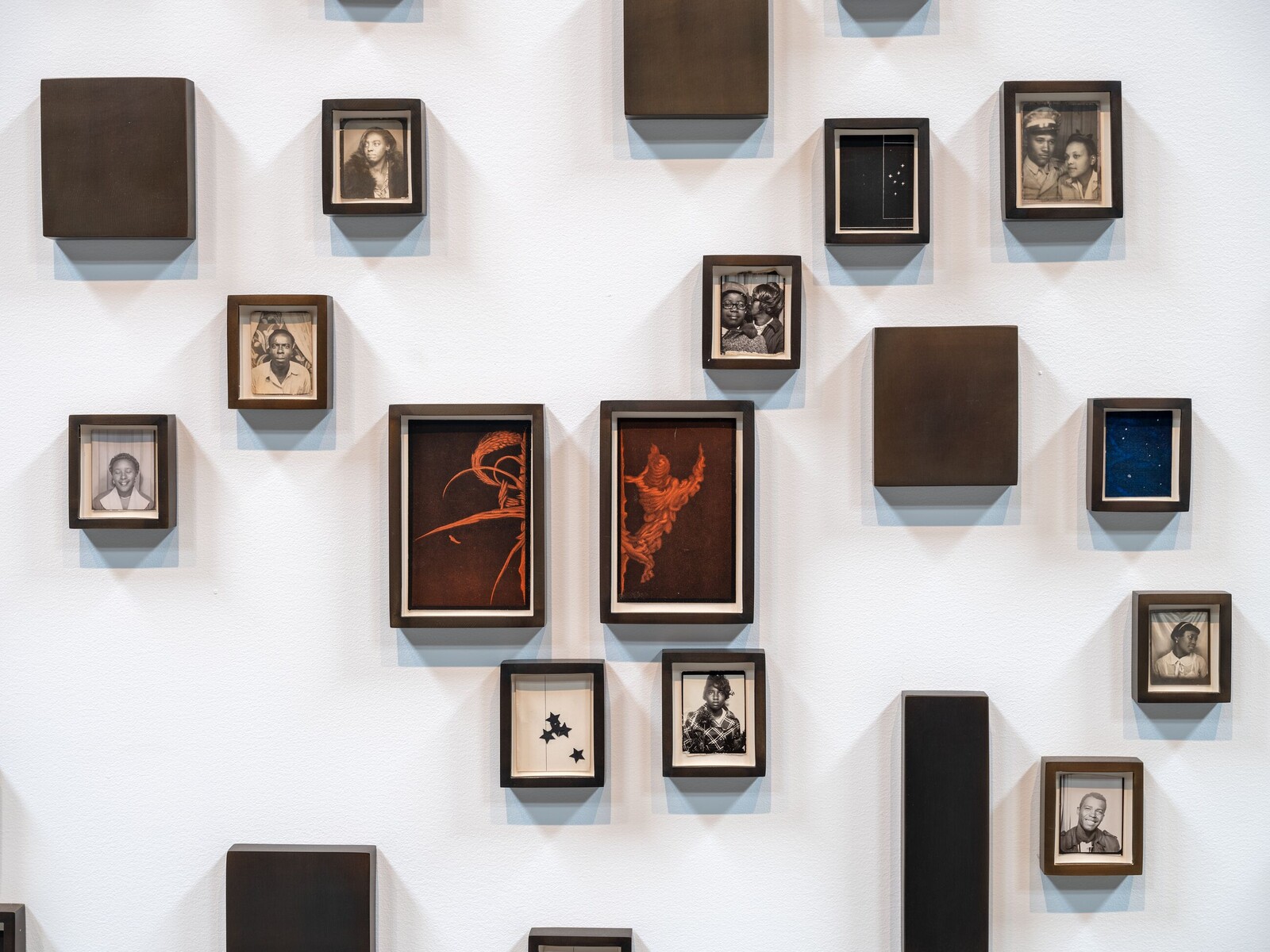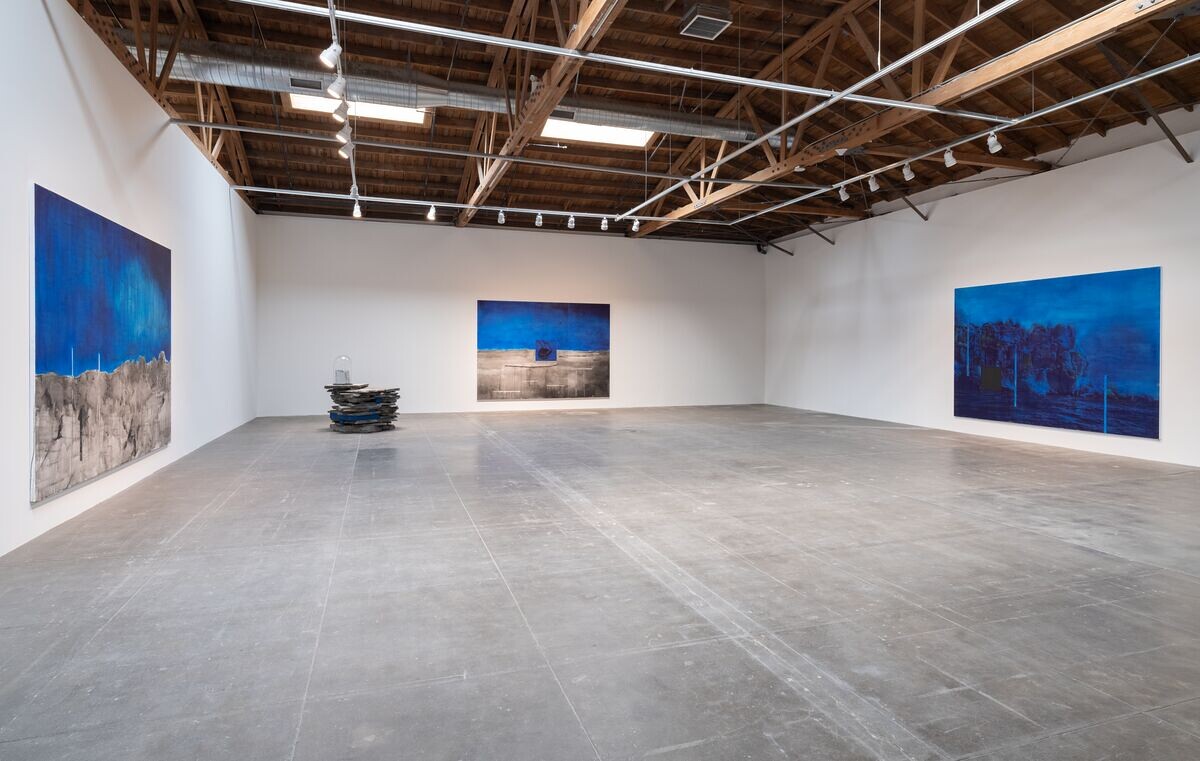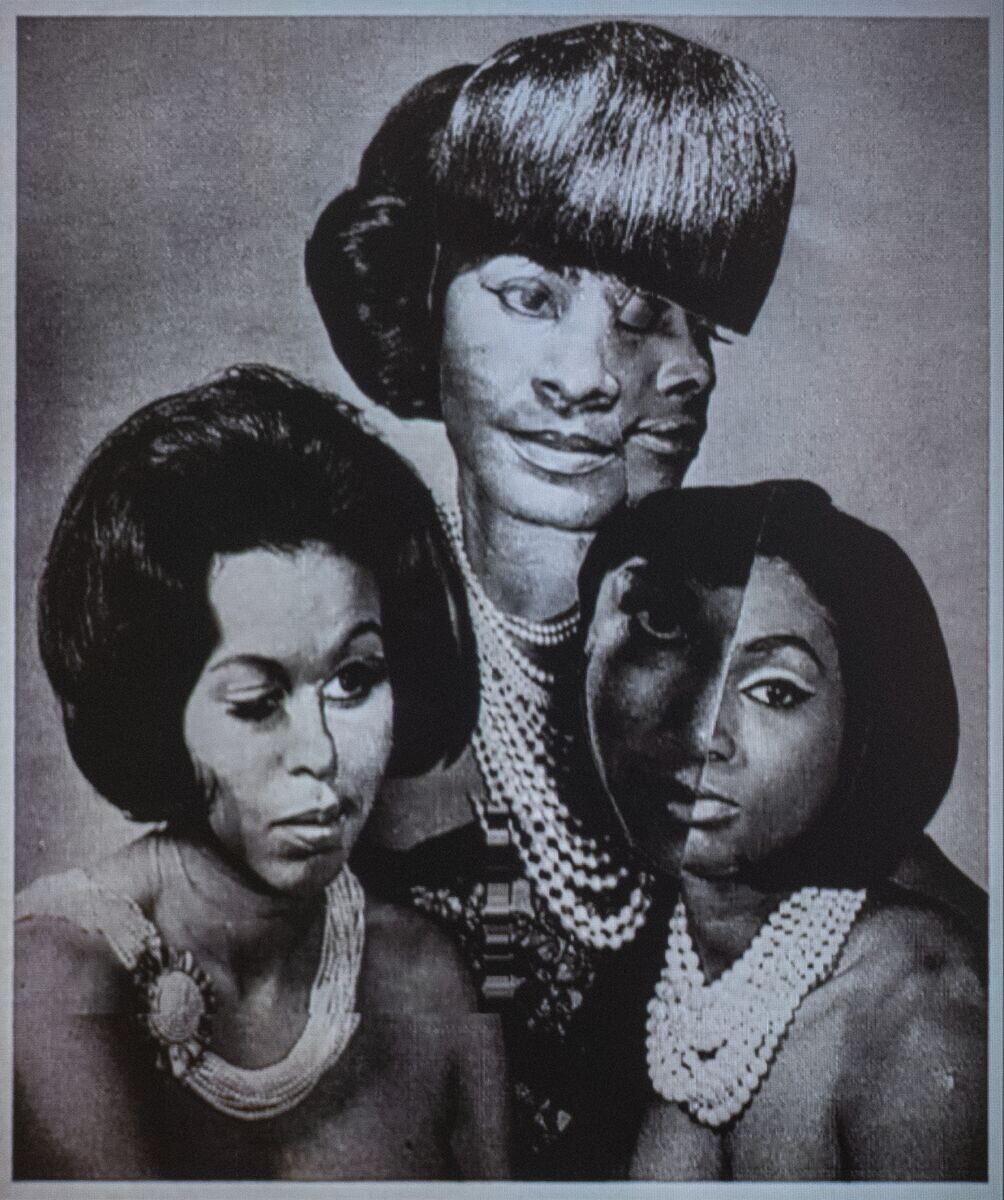September 14, 2021–January 9, 2022
A horizon line of celestial bodies runs around the first room of Lorna Simpson’s solo exhibition at Hauser & Wirth, Los Angeles. In each of these collages, the figure of a woman has been cut away from a printed photographic image and placed over another of a night sky, revealing, through the negative space of her form, a window onto the cosmos. The show’s title is borrowed from the first piece you encounter, a ten-part work stretching out like a necklace, or a string of stars perhaps, across the north wall. This opening gallery contains four multi-part works, and three discrete ones (all from 2021), of nearly identical scale and media: all are intimate collages affixed to rough, indigo-hued handmade paper. Of the twenty-four pieces in the first room, the majority have the same source material: nineteenth- or early twentieth-century astronomical charts, illustration plates depicting constellations of stars and planets and celestial events.
Simpson’s muses are sourced—as her female subjects so often are—from vintage magazines like Jet or Ebony, or pin-up calendars. These dazzling pieces are both tidy and careful, yet strangely unpredictable, as if Simpson had allowed the process of excising the female silhouettes to approach automatic drawing rather than exacting, surgical cutting—there is a quality at once lapidary and crude about their construction. Each of the bodies has been carefully removed, but in all instances the upper halves of the subjects’ faces have been preserved. The effect is of a bodycon skyscape outfit whose level of facial concealment verges on the niqab; Kim Kardashian’s appearance at the 2021 Met Gala, wearing what has been described as a “skintight burka” (the only exposed part of her was a slick, waist-skimming ponytail) comes to mind. For someone as hyper-exposed as Kardashian, her sartorial provocation begged the question of what it might mean—in a world of pervasive social media and constant commodification of, especially, the female body—to take the body out of circulation. Kardashian’s red-carpet appearance could not have been Simpson’s inspiration, but through these works, Simpson does precisely that: removes her subjects’ bodies from a context in which they can be consumed for pleasure or profit. Leaving just their impeccable coifs and piercing gazes intact suggests that sublimation of the physical body leads to a position of power, not to one of invisibility or irrelevance.
I think of Sun Ra’s Afrofuturist “Space Is the Place,” a 1974 sci-fi film based, in part, on the course he taught as an artist-in-residence at the University of California, Berkeley titled “The Black Man in the Cosmos.” I think of how relentlessly he propounded the idea that outer space was where the full potential of Black people might be realized. The ultra-close-up footage of the sun in Arthur Jafa’s Love Is The Message, The Message is Death (2016) plays on a related, if less abstract, notion. Jafa suggests that “It’s fundamentally an assertion that black people’s lives should be seen on a cosmological level […] it’s also related to rapture, to redemption […] I see black people’s lives in epic, mythic terms.”1 Of course, in the Archaic Greek mythic tradition, the lives of heroes favored by the gods were memorialized with an eponymous constellation for eternity in the firmament. Simpson leverages her position to achieve a similar end: take, for instance, one of the portraits of Rihanna she made for Essence magazine, in which the pop star’s iconic face radiates from the center of an afro-nebula dissolving into inky, spangled night. In reclaiming the territory of her subject’s bodies, Simpson removes her Black muses from their sexualized or commodified contexts and places them in the stars, thus wresting them from the tyranny of a science rooted in notionally white ownership—or colonization—of the skies.
As with much of Simpson’s work from the last decade, in which many of her collages render her subjects’ hair as crystalline or galactic through found imagery of telluric or extra-terrestrial origin, Afrofuturism is implicated. In “Everrrything,” the narrative eddies as the work engages contemporary questions of climate change, the refugee crisis, and digital technology. Simpson may have had very different intentions, but a roomful of monumental paintings of washy dark blue pigment flooded with gassy, iridescent ink read to me as melting, toxified gelid seascapes; the screen-printed heads and bodies of Ebony magazine models that ghost within their frames become symbols of the stateless, landless, seabound bodies of refugees. A bell-jar encasing an ice cube of pellucid glass, a work titled Hypothetical Physical States (2021), seems to allude to the dwindling artic ice caps, to the futile preservation and memorialization of something inherently, and irreversibly, fugitive.
A 14-second looped video, Walk with me (2020), is a moving sepia-toned portrait of three women whose faces are digitally collaged into something more Demoiselles d’Avignon (1907) than photographically indexical. The effect falls somewhere between the uncanniness of a deep fake and a Romare Bearden or Hannah Höch collage, and wrangles with the question, if not the utility, of technology (a musical installation of obsidian singing bowls placed on stacks of slate in the courtyard—activated daily by docents and guests—confirms the hypnotic sonic allure of a technology approximately 5,000 years older than digital media). In a small, lightless gallery, the trio of Walk with me blink impassively, heads moving slightly, vintage hairdos immaculate, busts draped in nothing but heavy, gleaming strands of pearls.
